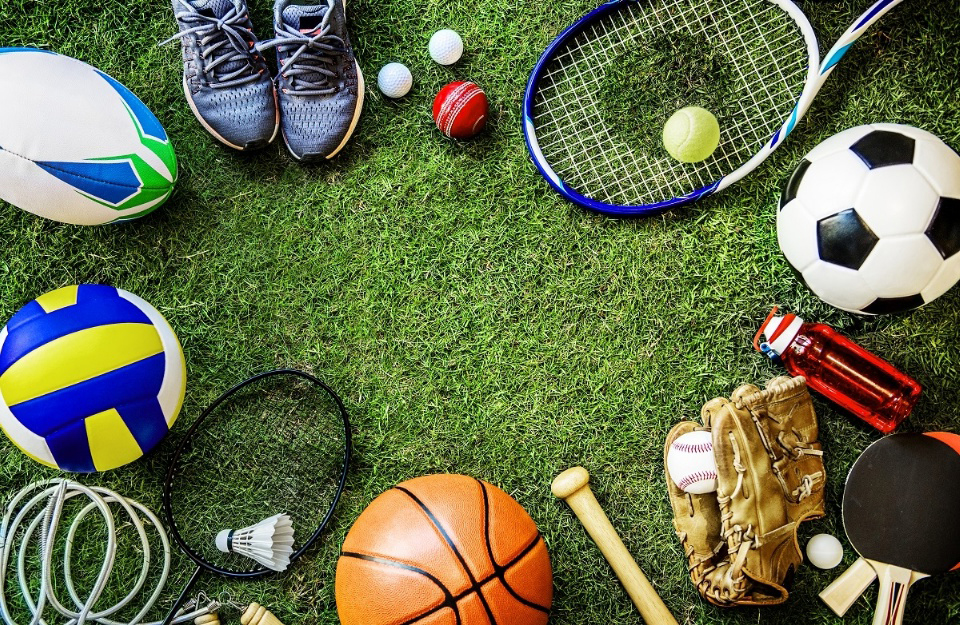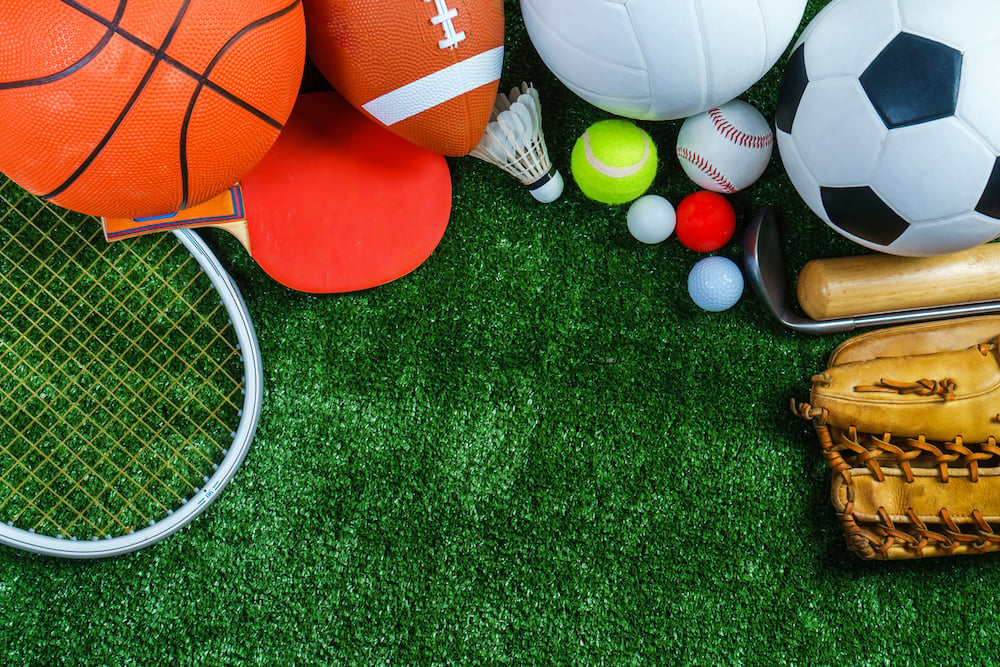I. Introduction

Sports accessories play a vital role in not only enhancing performance but also adding style to athletes’ attire. These accessories not only provide necessary protection but also elevate the overall sports experience. This article aims to explore the significance and variety of sports accessories available in the market today.
II. Headgear and Eyewear
A. Helmets
Helmets are an essential accessory for various sports, such as cycling, skiing, and motorcycling. Different sports demand specific types of helmets to cater to their unique requirements. For instance, a cycling helmet differs from a skiing helmet in terms of design and features.
- Types of Helmets for Different Sports
- Cycling helmets: Lightweight and aerodynamic design with ventilation for improved airflow.
- Skiing helmets: Provide insulation, superior shock absorption, and compatibility with goggles.
- Motorcycling helmets: Rigorous safety standards, noise reduction features, and aerodynamic design.
- Importance of Proper Fit and Safety Features
- Proper fit ensures helmet stability and reduces the risk of injuries.
- Safety features like chinstraps and impact resistance play a crucial role in safeguarding athletes from severe head injuries.
B. Sunglasses and Goggles

Sunglasses and goggles are essential accessories that protect athletes’ eyes from harmful UV rays, dust, and debris. They also enhance vision and provide glare reduction in outdoor sports.
- Benefits of UV Protection for Outdoor Sports
- Shielding eyes from harmful UV rays prevents damage to the cornea, cataracts, and macular degeneration.
- Enhanced vision clarity allows athletes to perform at their best and react promptly.
- Considerations for Choosing Goggles for Water Sports
- Water sports goggles must provide a watertight seal to prevent water entry while offering clear visibility.
- Anti-fog coating and polarized lenses reduce glare and ensure optimal vision in water environments.
III. Protective Gear
A. Mouthguards
In contact sports, mouthguards are essential to protect teeth, jaws, and soft tissues from impact-related injuries. A custom-fit mouthguard offers better protection and comfort.
- Importance of Mouthguards in Contact Sports
- Guards against dental injuries, including broken teeth and jaw fractures.
- Reduces the risk of concussions by absorbing shock and minimizing jaw movement.
- Customizable Options for Better Fit and Protection
- Custom-fit mouthguards offer a personalized fit to ensure maximum protection.
- Options like dual-layer construction and shock-absorbing materials enhance performance and durability.

B. Knee and Elbow Pads
Knee and elbow pads are designed to minimize the risk of injuries by providing impact absorption and support. Athletes in sports like skateboarding, rollerblading, and basketball benefit greatly from their usage.
- Impact-Absorbing Materials for Injury Prevention
- Pads made from materials like EVA foam and gel provide sufficient cushioning to absorb impact forces.
- Reinforced caps offer additional protection against cuts and abrasions.
- Proper Fit and Comfort Considerations
- Ensuring the correct size and fit of knee and elbow pads prevents discomfort and maintains their effectiveness.
- Breathable and moisture-wicking fabrics ensure proper ventilation and reduce sweating.
C. Wrist and Ankle Support
Wrist and ankle supports, including braces and wraps, assist in injury prevention and aid in the recovery process. They provide stability, compression, and controlled movement during intense activities.
- Role of Braces and Supports in Injury Prevention
- Stabilizes joints, preventing hyperextension and reducing the likelihood of sprains and strains.
- Offers support during rehabilitation, promoting healing and preventing reinjury.
- Choosing the Right Level of Support for Specific Activities
- Different activities require varying levels of support, from basic compression to rigorous stabilization.
- Sports-specific braces, like those designed for basketball or tennis, target specific muscle groups and offer targeted support.
IV. Equipment Enhancements

A. Performance Footwear
Performance footwear is a crucial aspect of sports accessories that directly impacts an athlete’s performance and overall comfort during physical activities. Different sports require specific features in sports shoes to optimize performance and reduce the risk of injuries.
- Key Features of Sports Shoes for Different Activities
- Running shoes: Cushioning, stability, and flexibility for impact absorption and smooth gait.
- Basketball shoes: Ankle support, traction, and responsiveness for quick movements and stability.
- Soccer cleats: Stud configurations, traction, and lightweight construction for agility and grip on various surfaces.
- Importance of Proper Fit and Choosing the Right Shoe Type
- Proper fit ensures maximum comfort, performance, and reduces the risk of blisters and injuries.
- The specific shoe type’s suitability to the sports activity enhances performance by providing necessary support and stability.
B. Sports Bags and Backpacks
Sports bags and backpacks are essential for athletes to carry their equipment and belongings to training sessions and competitions. Choosing the right bag with functional and practical features can greatly improve convenience and organization.
- Considerations for Storage and Organization of Sports Equipment
- Ample storage space and compartments for separating clean and dirty items.
- Dedicated pockets for shoes, water bottles, and smaller accessories to ensure easy access and organization.
- Features to Look for, such as Waterproof Material and Compartments
- Water-resistant or waterproof materials protect valuable equipment from rain and moisture.
- Separate compartments for wet gear or compartments with ventilation to prevent odors and bacterial growth.
C. Performance Tracking Devices

The advent of technology has revolutionized sports performance tracking, allowing athletes to monitor and analyze their progress in real-time. Wearable devices are increasingly popular in enhancing performance and providing valuable insights.
- Role of Technology in Monitoring and Improving Performance
- Accurate tracking of vital metrics such as heart rate, calories burned, and activity duration.
- Real-time analysis and feedback assist in making informed training decisions for better performance.
- Overview of Wearable Devices and Their Benefits
- Fitness trackers: Monitor daily activity levels and provide motivation for staying active.
- GPS watches: Track distance covered, pace, and route taken.
- Smartwatches: Combine fitness tracking features with additional functionalities like music control and smartphone notifications.
V. Style and Function
A. Compression Clothing
Compression wear has gained popularity among athletes due to its potential benefits in both performance enhancement and post-workout recovery.
- Benefits of Compression Wear in Sports Performance and Recovery
- Enhanced blood circulation and oxygen delivery to muscles, leading to improved performance and reduced muscle fatigue.
- Compression garments can aid in muscle recovery by reducing swelling and soreness.
- Choosing the Right Compression Level and Fit
- Different compression levels offer varying degrees of pressure, and choosing the appropriate level depends on individual needs and preferences.
- Proper fit is essential to ensure optimal compression and comfort during physical activities.
B. Sweat-Wicking Apparel
Sweat-wicking apparel plays a significant role in maintaining comfort and performance by managing moisture effectively during intense workouts or in hot conditions.
- Importance of Moisture Management in Comfort and Performance
- Moisture-wicking fabrics draw sweat away from the body, promoting evaporation and keeping the body dry and cool.
- Improved moisture management prevents chafing, skin irritation, and bacterial growth.
- Materials and Features to Consider for Sweat-Wicking Clothing
- Synthetic fabrics like polyester or nylon are known for their quick-drying properties and moisture-wicking abilities.
- Mesh panels or ventilation zones aid in maximizing breathability and airflow.
C. Sports Watches and Accessories
Sports watches offer numerous features that aid in training, timing, and monitoring progress, while additional accessories add convenience and safety to an athlete’s overall experience.
- Features and Functionalities of Sports Watches for Athletes
- Advanced timing functions like lap splits, countdown timers, and interval training modes.
- Heart rate monitoring, GPS tracking, and altitude sensors for detailed activity analysis.
- Additional Accessories for Convenience and Safety
- Armbands and waist belts for carrying smartphones or music devices while keeping hands-free during workouts.
- Safety accessories like reflective bands or lights for enhanced visibility during nighttime activities.
VI. Conclusion
Sports accessories extend beyond style and are essential tools for athletes to maximize performance and ensure their safety during physical activities. Performance footwear, sports bags and backpacks, performance tracking devices, compression clothing, sweat-wicking apparel, sports watches, and additional accessories all contribute to enhancing an athlete’s overall experience. By understanding the key features, importance of proper fit, and the benefits each accessory provides, athletes can make informed choices to optimize their performance and style.
